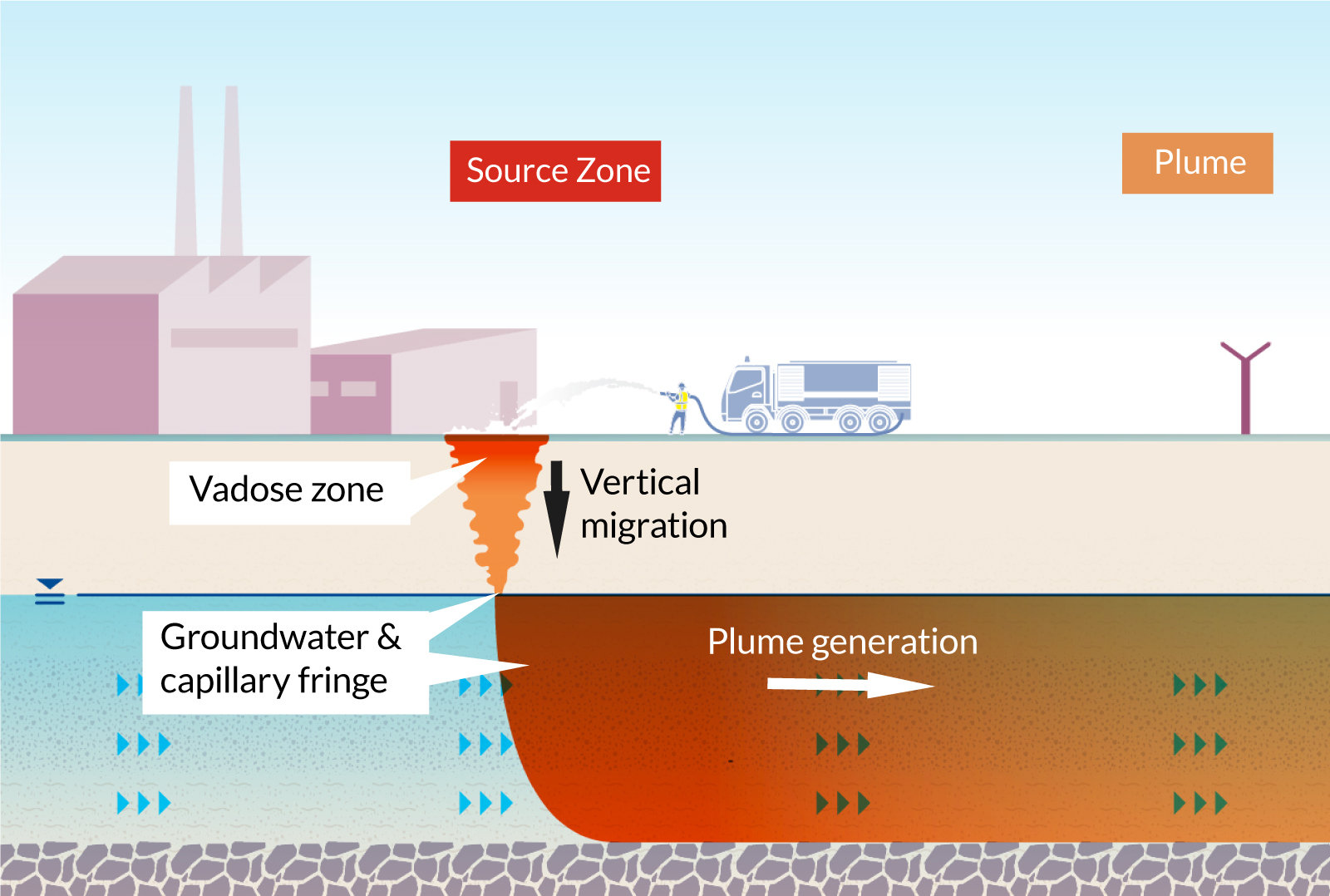Innovative PFAS Treatment Solutions for Safer Water
The raising frequency of PFAS contamination in water materials necessitates a vital exam of ingenious therapy solutions. Furthermore, arising bioremediation methods supply a more lasting strategy to dealing with PFAS challenges. pfas management.
Review of PFAS Contamination
PFAS contamination has become a considerable environmental and public health worry. Per- and polyfluoroalkyl materials (PFAS) are a group of artificial chemicals understood for their determination in the atmosphere and body, leading them to be generally described as "forever chemicals." These compounds have actually been extensively used in different industries, including firefighting foams, water-repellent textiles, and food product packaging, mostly because of their water- and grease-resistant residential properties.
The extensive use of PFAS has actually led to their discovery in dirt, water materials, and also in the blood of human beings and animals. Research studies have actually linked PFAS direct exposure to various health issues, consisting of developing impacts in infants, body immune system dysfunction, and numerous kinds of cancer cells. Additionally, the environmental perseverance of these substances complicates their deterioration and elimination, increasing problems regarding long-term ecological influences.
Governing bodies are significantly executing strict standards to keep track of and decrease PFAS degrees in drinking water and various other ecological tools. As awareness of PFAS contamination expands, it has actually ended up being necessary for communities and sectors to look for efficient treatment solutions to reduce exposure and safeguard public wellness.
Advanced Purification Technologies
As the seriousness to attend to PFAS contamination heightens, advanced purification technologies have become a critical element in the remediation efforts focused on eliminating these persistent chemicals from water resources. These modern technologies utilize innovative systems to successfully target and capture PFAS compounds, which are infamously immune to traditional therapy techniques.
One of one of the most appealing techniques is the usage of granular turned on carbon (GAC), which adsorbs PFAS particles because of its high surface area and porous framework. This approach has been commonly executed in both municipal and commercial setups, demonstrating substantial reductions in PFAS concentrations. In addition, ion exchange materials have gotten traction, specifically designed to selectively bind PFAS ions from water, thus facilitating their elimination.
Membrane purification technologies, such as reverse osmosis and nanofiltration, also show efficiency in PFAS removal by physically separating pollutants from water - pfas management. These systems can achieve high levels of pureness, making them appropriate for alcohol consumption water applications
Chemical Treatment Developments
Many chemical therapy advancements are being discovered to effectively deal with PFAS contamination in water materials. One appealing approach involves making use of sophisticated oxidation procedures (AOPs), which utilize effective oxidants such as ozone, hydrogen peroxide, or chlorine dioxide incorporated with UV light to damage down PFAS compounds into less harmful substances. This technique has demonstrated efficacy in laboratory settings, showing prospective for scalability in real-world applications.
An additional innovative strategy is the development of ion-exchange resins especially developed to target PFAS. These materials can uniquely adsorb PFAS substances from water, permitting their elimination during treatment processes. Current improvements have enhanced the performance and capability of these materials, making them a beneficial option for water therapy facilities.
Furthermore, scientists are investigating the use of chemical agents like persulfate and go to the website ferrous ions to boost the destruction of PFAS in infected water. These representatives can cause chain reaction that help with the breakdown of relentless PFAS substances.
Emerging Bioremediation Methods
Recent advancements in chemical therapy advancements have led the way for checking out bioremediation strategies as a viable choice for dealing with PFAS contamination. Bioremediation uses the all-natural metabolic procedures of bacteria to degrade or change toxins, making it an enticing technique for dealing with consistent impurities like PFAS.
Arising strategies in bioremediation include using genetically engineered microbes that can particularly target and break down PFAS compounds. These microbial stress are being established for their boosted degradation capabilities, boosting the efficiency of the remediation procedure. Furthermore, researchers are checking out the potential of plant-assisted bioremediation, where specific plant species might uptake and sequester PFAS from contaminated soil and water.
Another encouraging strategy is the application of bioaugmentation, which includes presenting beneficial microorganisms into infected environments to increase the degradation of PFAS. This method can assist in much click this site faster remediation timelines and boost general efficiency.

Regulatory Frameworks and Requirements
An extensive regulatory framework is necessary for successfully handling PFAS contamination and ensuring public wellness protection. The raising recognition of per- and polyfluoroalkyl substances (PFAS) as ecological contaminants has triggered different federal and state companies to create criteria that regulate their existence in water supplies. The U.S. Epa (EPA) has actually developed health and wellness advisories and is pursuing setting enforceable restrictions for PFAS in alcohol consumption water.
State-level laws differ considerably, with some states adopting more stringent standards than those proposed by the EPA. These laws frequently consist of maximum impurity degrees (MCLs) for specific PFAS compounds, surveillance needs, and reporting obligations for water utilities. Additionally, more info here emerging frameworks concentrate on the removal of polluted sites, highlighting the demand for reliable treatment modern technologies.

Verdict
Finally, the growth and execution of ingenious PFAS therapy remedies are important for addressing the prevalent issue of water contamination. Advanced purification innovations, chemical treatments, and emerging bioremediation methods jointly offer a diverse approach to successfully decrease and break down PFAS levels. As regulative frameworks continue to develop, integrating these modern technologies will be vital to protect public health and restore the integrity of polluted water sources, eventually contributing to a cleaner and more secure atmosphere.